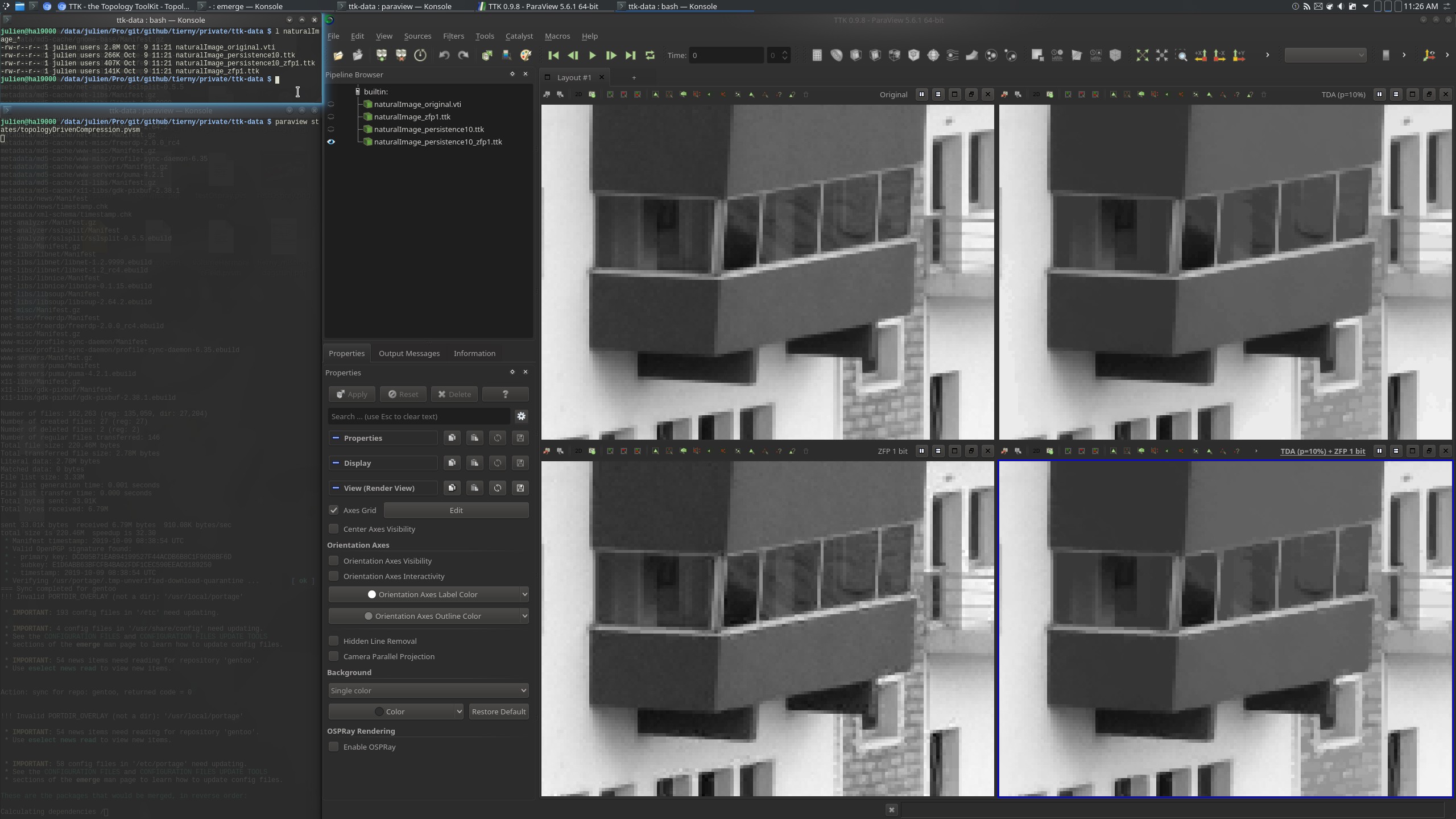Persistence-Driven Compression¶

Pipeline description¶
This example helps comparing three outputs of the TopologicalCompression filter to the original input grayscale image (top-left view in the above screenshot), with the following parameters:
- ZFP relative error tolerance set to 50%, no topological compression (bottom-left view in the above screenshot),
- Topological loss set to 10%, no ZFP extra compression (top-right view),
- Topological loss set to 10% and ZFP relative error tolerance set to 50% (bottom-right view).
Those files have been generated from the original VTI image using the TopologicalCompressionWriter filter. To read them, Paraview uses its counterpart, TopologicalCompressionReader.
ParaView¶
To reproduce the above screenshot, go to your ttk-data directory and enter the following command:
paraview states/persistenceDrivenCompression.pvsm
Python code¶
This script loads the uncompressed
naturalImage_original.vti
input file, saves it as in the TTK Topological Compressed Image Data
file format, using
TopologicalCompressionWriter
under the hood. The produced file is then loaded with
TopologicalCompressionReader
and saved back to VTI. This demonstrates the use of the
TopologicalCompression I/O modules.
1 2 3 4 5 6 7 8 9 10 11 12 13 14 15 16 17 18 19 20 21 22 23 24 25 26 | |
To run the above Python script, go to your ttk-data directory and enter the following command:
pvpython python/persistenceDrivenCompression.py
Inputs¶
-
naturalImage_original.vti: a grayscale picture converted to the VTI format
-
naturalImage_zpf50.ttk: the previous image, compressed using
TopologicalCompressionWriterwith ZFP compressor only (no topological compression). ZFP relative error tolerance was set to 50%. -
naturalImage_persistence10.ttk: the first input image, compressed using
TopologicalCompressionWriterwith a Topological loss of 10% and without ZFP (ZFP relative error tolerance set to a negative value). -
naturalImage_persistence10_zpf50.ttk: the first input image, compressed using
TopologicalCompressionWriterwith a Topological loss of 10% and a ZFP relative error tolerance set to 50%.
Outputs¶
uncompressed_naturalImage_persistence10_zfp50.vti: the first input, compressed and saved as a VTI file.